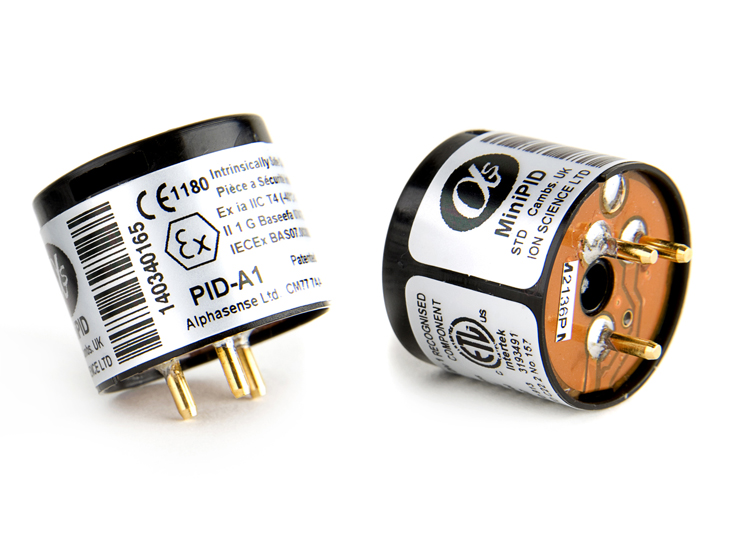Basic knowledge of PID sensor detectors
1. What’s PID sensor?
PID is the acronym for Photoionization Detection in English.
The basic principle of PID is to use the ultraviolet (VUV) produced by vacuum discharge of inert gas to ionize the gas molecule to be measured. The concentration of the gas to be measured can be obtained by measuring the current intensity produced by the ionized gas.
2. What are the advantages of PID detection method?
1) It has high accuracy and can meet the requirement of quantitative detection of low concentration benzene.
2) Anti-interference is strong, and the common gases (alkanes) in petrochemical industry are not easy to affect them.
3) Cooperate with pump-suction air intake, quick response and quick recovery;
4) It is a non-destructive detector that does not "burn" or permanently change the gas to be measured.
3. What is the principle of the PID sensor?
The PID sensor is composed of ultraviolet light source and ion chamber. There are positive and negative electrodes in the ion chamber to form an electric field. Under the excitation of high-energy ultraviolet light source, organic volatile molecules generate negative electrons and positive ions. These ionized particles form current between the electrodes. After amplification and processing by the detector, the current signal is output, and finally the concentration of ppm level is detected.
4. What gases can PID detect?
They are mainly synthetic unsaturated hydrocarbons, macromolecules and long-chain organic compounds.
(1) Organic compounds containing carbon:
① Halogenated hydrocarbons, thiohydrocarbons, unsaturated hydrocarbons (such as olefins) and so on.
② Aromatics: benzene, toluene, xylene (including o, m, p-xylene), naphthalene, etc.
③ Alcohols: methyl mercaptan, propylene alcohol, n-butanol, 2-butoxyethanol, etc.
④ Ketones and aldehydes: acetaldehyde, acetaldehyde, acetone, acrolein, etc.
⑤ Amines: dimethylamine, dimethylformamide, etc.
(2) Some carbon-free inorganic gases: ammonia, semiconductor gases (such as arsenic, selenium, bromine, iodine) and so on.
5. What gases can not be detected by PID?
PID cannot detect small molecules and compounds with saturated bonds in most nature.
1) Air (N2, O2, CO2, H2O)
2) Common toxic gases (CO, HCN, SO2)
3) Natural gas (methane, ethane, propane, etc.), hydrogen
4) Acidic gases (HCl, HF, HNO 3)
5) Freon
6) Ozone
7) Radioactive substances, etc.

- Pre:Oxygen detector dirty can be washed with water? 2018/12/28
- Next:New portable gas detector with inner pump 2016/4/11




